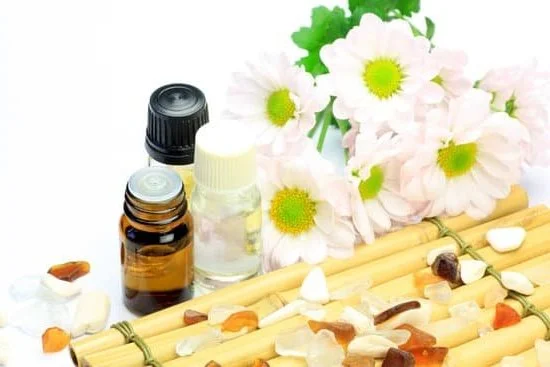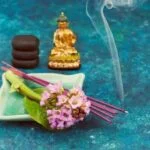Aromatherapy oils for mold have been gaining popularity as a natural and effective solution for preventing and combating mold growth in homes. Mold can be a common issue in many households, leading to potential health risks and damage to property. In this article, we will explore the benefits and uses of aromatherapy oils in addressing mold problems, providing insights into how these essential oils can help maintain a healthy and mold-free living environment.
Mold growth in the home is often caused by factors such as moisture, poor ventilation, and humidity, creating an environment conducive to mold spores. Not only can mold cause unpleasant odors and unsightly stains, but it can also trigger allergic reactions and respiratory issues in individuals. Understanding the causes and dangers of mold is crucial in order to effectively address this issue.
Aromatherapy oils have been found to offer natural antifungal properties that can help prevent and eliminate mold growth. These oils not only act as a safe alternative to chemical-laden mold remediation products but also provide additional therapeutic benefits for mental well-being.
In the following sections of this article, we will delve into the specific ways in which aromatherapy oils can be used to combat mold, as well as provide recommendations for the best essential oils suited for this purpose.
Understanding the Causes and Dangers of Mold in the Home
Mold is a common household problem that can cause a range of health issues and property damage. Understanding the causes and dangers of mold in the home is essential for preventing and addressing its growth.
Mold thrives in moist and warm environments, making bathrooms, kitchens, and basements prime areas for infestations. Poor ventilation, leaks, and high humidity levels in the home can contribute to mold growth, posing significant risks to both the structural integrity of the property and the health of its occupants.
The Dangers of Mold in the Home
Mold exposure can lead to various health problems, including respiratory issues, allergic reactions, skin irritation, and even more severe conditions in individuals with compromised immune systems. Furthermore, mold growth can cause damage to walls, ceilings, floors, carpets, and other surfaces within the home. If left unaddressed, mold infestations may result in costly repairs and decreased property value.
Understanding the Causes of Mold Growth
To effectively combat mold growth in the home, it’s crucial to understand its root causes. As mentioned earlier, excess moisture from water leaks or high levels of humidity provides an ideal environment for mold to thrive. Additionally, poor ventilation can trap moisture indoors, creating conditions conducive to mold growth. By identifying these contributing factors within your home environment and taking proactive measures to address them, you can significantly reduce the risk of mold infestations.
By gaining insight into the dangers of mold in the home and understanding its causes, homeowners can take proactive steps to prevent its growth altogether. This knowledge also sets the stage for exploring how aromatherapy oils can be leveraged as a natural solution for combating and preventing mold infestations.
How Aromatherapy Oils Can Help Prevent and Combat Mold Growth
Aromatherapy oils have been used for centuries for their various therapeutic properties, including their ability to prevent and combat mold growth in the home. These essential oils are derived from plants and have potent anti-fungal, antibacterial, and antiviral properties that make them effective allies in the fight against mold. When properly used, aromatherapy oils can not only eliminate existing mold but also prevent its regrowth.
Antifungal Properties of Aromatherapy Oils
One of the key reasons why aromatherapy oils are effective in combating mold growth is their natural antifungal properties. Certain essential oils such as tea tree oil, eucalyptus oil, and lavender oil contain compounds that have been shown to inhibit the growth of mold spores. These oils can be used as a natural alternative to chemical-based fungicides, providing a safe and eco-friendly way to address mold issues in the home.
Reducing Moisture Levels
In addition to their antifungal properties, some aromatherapy oils can also help reduce moisture levels in the air. Mold thrives in damp environments, so using dehumidifying essential oils like lemon oil or peppermint oil can help create an inhospitable environment for mold growth. By incorporating these oils into your cleaning routine or using them in a diffuser, you can help maintain optimal humidity levels and prevent mold from taking hold.
Mitigating Health Risks
Mold infestations can pose serious health risks, especially for those with respiratory conditions or allergies. Aromatherapy oils not only combat mold at its source but also offer additional benefits such as improved air quality and respiratory support.
Oils like oregano, thyme, and cinnamon have powerful antimicrobial properties that can help purify the air and reduce the potential health hazards associated with mold exposure. Incorporating these oils into your home environment can contribute to a healthier living space while addressing mold concerns simultaneously.
The Best Aromatherapy Oils for Mold
Aromatherapy oils have long been used for their therapeutic and medicinal benefits, but they can also be a powerful tool in preventing and combating mold growth in the home. When it comes to choosing the best aromatherapy oils for mold, it’s important to select oils with strong antifungal, antibacterial, and antimicrobial properties. Here is a comprehensive guide to some of the best aromatherapy oils for mold:
- Tea Tree Oil: Known for its potent antifungal and antibacterial properties, tea tree oil is highly effective at combatting mold growth. Its strong scent also helps to purify the air and eliminate musty odors.
- Lavender Oil: In addition to its calming and relaxing effects, lavender oil has natural antifungal properties that can help prevent mold growth. It also leaves a pleasant and soothing aroma in the home.
- Cinnamon Oil: Cinnamon oil is a powerful antimicrobial agent that can effectively kill off mold spores. Its warm and spicy scent adds a cozy ambiance to the home while keeping mold at bay.
When using aromatherapy oils to tackle mold, it’s important to consider the application methods that will be most effective in your home. Whether it’s through diffusing, spraying, or incorporating them into cleaning solutions, each method offers unique benefits in preventing mold growth.
In addition to their antifungal properties, many aromatherapy oils also boast natural cleaning abilities that make them ideal for use in DIY cleaning recipes. By combining these oils with other natural ingredients like vinegar or baking soda, you can create potent solutions that not only combat mold but also leave your home smelling fresh and clean.
With these DIY recipes, you can take a proactive approach to preventing mold infestations while also maintaining a healthy living environment for you and your family.
Different Application Methods for Using Aromatherapy Oils to Tackle Mold
Aromatherapy oils can be a highly effective and natural way to combat mold growth in the home. There are several different application methods for using aromatherapy oils, each with its own benefits and best uses.
One of the most popular methods is through diffusers, which disperse the essential oil into the air, filling the room with its pleasant scent and anti-microbial properties. This method not only helps to combat mold but also adds a fresh fragrance to your living space.
Another effective application method for using aromatherapy oils to tackle mold is through direct topical application. Some essential oils, such as tea tree oil and cinnamon oil, have powerful anti-fungal properties that can directly target and eliminate mold spores when applied to affected areas. Additionally, you can create a natural cleaning solution by mixing these essential oils with water and a small amount of vinegar to use on surfaces prone to mold growth.
For those looking for a more targeted approach, using cotton balls or pads soaked in aromatherapy oils and placing them in areas susceptible to mold growth can be an effective method. This allows the essential oil to continuously release its mold-fighting properties into the surrounding environment. Lastly, incorporating aromatherapy oils into homemade cleaning products can also help prevent mold from taking hold in your home.
| Application Method | Description |
|---|---|
| Diffusers | Disperses essential oil into the air to combat mold and add fragrance. |
| Topical Application | Directly targets and eliminates mold spores on affected areas. |
| Cotton Balls/Pads | Allows continuous release of aromatherapy oil’s properties in susceptible areas. |
| Homemade Cleaning Products | Incorporate aromatherapy oils for preventing mold in your home. |
DIY Aromatherapy Oil Recipes for Mold Prevention and Remediation
Aromatherapy oils have been used for centuries for their therapeutic and medicinal properties. When it comes to mold prevention and remediation, certain essential oils have proven to be effective in inhibiting mold growth and eliminating existing mold. DIY aromatherapy oil recipes offer a natural and safe alternative to chemical-laden commercial mold removers. By harnessing the power of these oils, you can not only keep your home free from mold but also enjoy the added benefits of their delightful fragrances.
One effective DIY aromatherapy oil recipe for mold prevention involves creating a natural spray using tea tree oil, which is known for its antifungal properties. Simply mix 10 drops of tea tree oil with water in a spray bottle and shake well before use.
This solution can be sprayed on surfaces prone to mold growth, such as bathroom tiles, shower curtains, and window sills. Tea tree oil can also be mixed with other antifungal essential oils like eucalyptus or lavender for an even more potent mold-fighting blend.
Another popular aromatherapy oil recipe for combating mold involves making a homemade diffuser blend using citrus oils such as lemon, grapefruit, or orange. Citrus oils are not only refreshing and uplifting but also possess antimicrobial properties that can help deter mold growth. To create a DIY diffuser blend, simply add a few drops of your chosen citrus essential oil to a diffuser along with water and let it run in rooms susceptible to moisture and humidity.
Using these DIY aromatherapy oil recipes as part of your cleaning routine can effectively prevent the onset of mold while simultaneously filling your home with delightful scents. It’s important to note that while these essential oils are effective in inhibiting mold growth, they should not be used as a substitute for professional mold remediation in cases of severe infestation.
| Aromatherapy Oil Recipe | Ingredients |
|---|---|
| Natural Spray for Mold Prevention | 10 drops tea tree oil + water |
| Homemade Diffuser Blend | citrus essential oil (lemon, grapefruit, or orange) + water |
Tips for Incorporating Aromatherapy Oils Into Your Cleaning Routine to Keep Mold at Bay
Incorporating aromatherapy oils into your cleaning routine can be a highly effective way to keep mold at bay in your home. These natural oils not only help to prevent the growth of mold, but they also leave your living spaces smelling fresh and pleasant. Here are some tips for using aromatherapy oils as part of your regular cleaning regimen.
One way to use aromatherapy oils for mold prevention is to add a few drops of the oil to your regular cleaning solutions. For example, adding tea tree oil to a mixture of water and vinegar can create a powerful all-purpose cleaner that also helps to inhibit mold growth. Similarly, you can add a few drops of lemon or orange oil to your floor cleaner to not only clean but also prevent mold from taking hold in damp areas.
Another method for incorporating aromatherapy oils into your cleaning routine is by using them in a diffuser while you clean. By diffusing oils like eucalyptus, lavender, or cinnamon during your cleaning sessions, you can not only enjoy their pleasant scents but also harness their anti-microbial properties to keep mold at bay.
For targeted mold prevention in specific problem areas, such as bathrooms or basements, consider creating DIY room sprays using aromatherapy oils. A simple mixture of water and essential oils such as oregano, peppermint, or thyme can be sprayed on surfaces prone to mold growth as an added protective measure.
By integrating these tips into your regular cleaning routine, you can effectively harness the power of aromatherapy oils for mold prevention while keeping your home smelling fresh and clean. Be sure to explore different essential oil options and application methods to find the best fit for your needs.
Other Natural Remedies and Techniques for Combating Mold in the Home
Mold is a common problem in many homes, and while aromatherapy oils can be effective in preventing and combating mold growth, there are also other natural remedies and techniques that can be used in conjunction with aromatherapy oils to address this issue. Here are some additional natural methods for combating mold in the home:
Unplug and remove any visible mold growth using a mixture of water and detergent or vinegar. This will help to physically remove the mold from surfaces before using aromatherapy oils to prevent its return.
Use essential oils with anti-fungal properties such as tea tree oil, eucalyptus oil, or lavender oil in combination with a diffuser or spray bottle to help eliminate mold spores in the air and on surfaces.
Create a natural cleaning solution using ingredients like white vinegar, hydrogen peroxide, or baking soda to clean and disinfect areas affected by mold. These natural cleaning agents are effective at removing mold without the use of harsh chemicals.
Implement proper ventilation in damp areas such as bathrooms, kitchens, and basements to reduce moisture levels and inhibit mold growth. Use fans or dehumidifiers to keep humidity levels below 60% to discourage mold from thriving.
By utilizing these natural remedies and techniques in addition to aromatherapy oils for mold prevention, homeowners can create a comprehensive approach to combatting and preventing mold infestations in their living spaces. These methods offer a safe and effective alternative to chemical-laden products while promoting a healthy indoor environment for you and your family.
Conclusion
In conclusion, incorporating aromatherapy oils into your cleaning routine can be a highly effective and natural way to prevent and combat mold growth in your home. The powerful anti-fungal and antibacterial properties of certain essential oils make them an excellent choice for keeping mold at bay. By using these oils in various application methods, such as diffusing, spraying, or adding them to cleaning solutions, you can create a hostile environment for mold spores, ultimately safeguarding your home from infestations.
The best aromatherapy oils for mold include tea tree oil, cinnamon oil, and grapefruit seed extract, among others. These oils have been scientifically proven to inhibit the growth of mold and mildew, making them valuable allies in the fight against household fungi. Additionally, with the availability of DIY aromatherapy oil recipes for mold prevention and remediation, you can easily create customized blends that suit your preferences while effectively combating mold in your home.
In addition to utilizing aromatherapy oils, it’s important to consider other natural remedies and techniques for combating mold in the home. This may include addressing any underlying moisture issues, improving ventilation in damp areas, and implementing regular cleaning and maintenance routines. By harnessing the power of aromatherapy oils alongside these measures, you can create a holistic approach to safeguarding your home from mold infestations and creating a healthier living environment for you and your family.

Are you looking for a natural way to improve your health and wellbeing?
If so, aromatherapy may be the answer for you.





